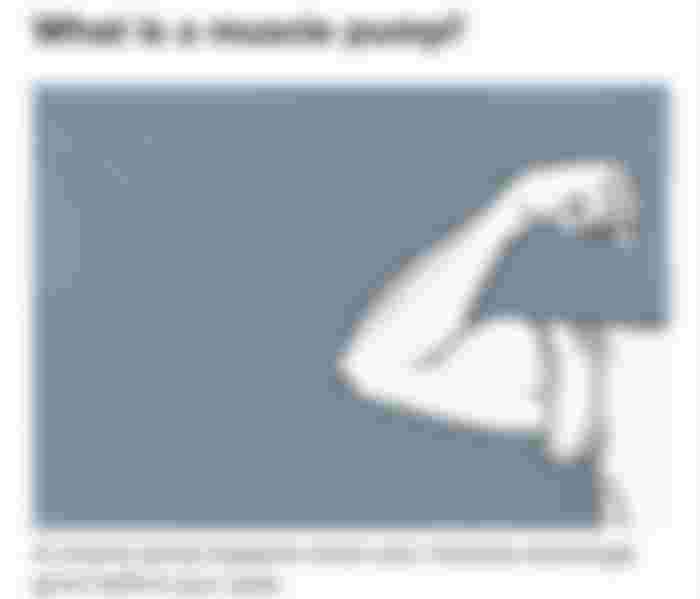By: @ECHO22
Why do your muscles look bigger when you're lifting weights? That's a muscle pump.

The muscle pump is such a cool thing: Your muscles literally grow before your eyes! Most fitness enthusiasts spend at least some time "chasing the pump" regardless of what their overall goal is. That instant muscle growth just makes you feel strong, accomplished and, to be quite honest, super sexy.
But what exactly is going on when you get a muscle pump? How is it possible that your muscles grow so much in just an hour, and the next morning they're back to normal? I answer those questions and more in this no-nonsense guide to muscle pumps including whether or not the muscle pump actually helps you build muscle.

Muscle pump" is really just fitness slang for a phenomenon called transient hypertrophy. Hypertrophy refers to the growth of a muscle, and transient means it's only temporary. Transient hypertrophy, or the sought-after muscle pump, is a rather complex physiological process, so I'll spare you the jargon.
In short, a muscle pump occurs when fluids, including water and blood, accumulate in your muscles during movement. This happens in response to two primary triggers:
[bad iframe src]
Lactic acid begins to build up in your working muscles and draws water into them.
Your heart pumps more blood to your working muscles because they need more oxygen and nutrients to power them.
This surge of fluids causes your muscle cells to swell up, making your muscles look larger than usual. When you get a muscle pump, it might feel like your muscles are "full," in a sense.
Read more: Cardio before or after weight lifting? Which is better for muscle growth?

Most people get a muscle pump from lifting weigh in fact, bodybuilders take advantage of this transient hypertrophy phenomenon before they go on stage at a bodybuilding competition to make their muscles appear larger than they really are.
You could theoretically get a muscle pump doing anything that increases circulation to your muscles, but research (and anecdotes from any die-hard lifter) suggests that high-volume weight training is the best way to get a muscle pump.
High-volume resistance training means a lot of reps and a lot of sets, typically with shorter rest periods. You can achieve high-volume training by manipulating a few variables:
You can do more reps
You can do more sets (five sets of 10 instead of your usual three sets of 10)
You can shorten your rest interval (60-second rest versus your usual two-minute rest)
In general, the more contractions your muscles make, the more fluid engorges your muscles. Serious bodybuilders and weightlifters may even follow "pump training" protocols, wherein the primary goal is achieving a muscle pump. Pump training focuses solely on muscle contraction and increasing blood flow to working muscles.
If you're really serious about maximizing your muscle pump, make sure to hydrate before your workout to encourage more water uptake by your muscles. There's limited evidence that eating carbohydrates and supplementing with creatine before your workouts can also increase the muscle pump.
Citrulline malate is another supplement that might help citrulline malate enhances nitric oxide production, and nitric oxide dilates your blood vessels, thus encouraging blood flow.
Thanks for watching the post..please Subscribe,like,comment upvote.Then I'll give you too.


